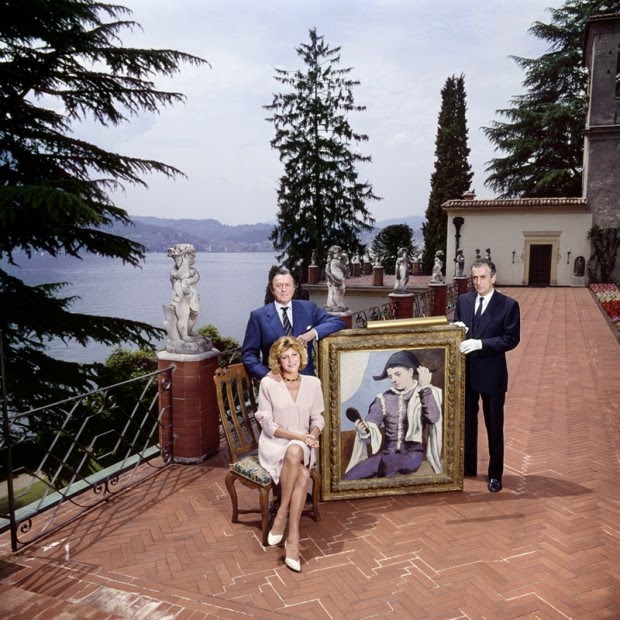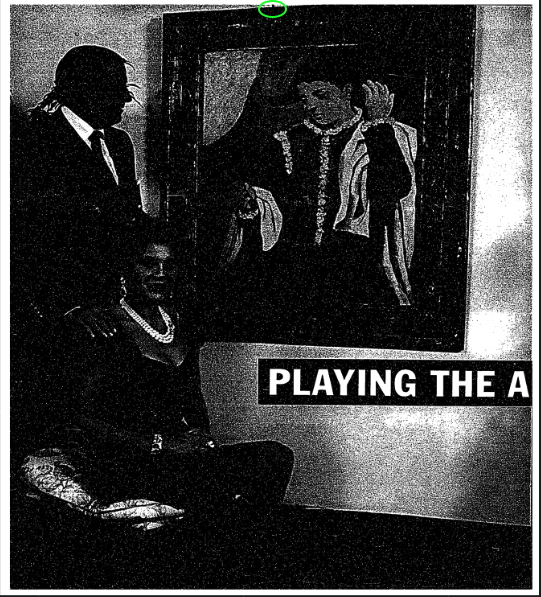
Untitled (Picture Light), 2017, picture light, gilt frame, Picasso, installation view, 1989. image: Chema Conesa via The Art Newspaper
In 1989 Baron and Baroness von Thyssen-Bornemisza brought a dining chair out to the terrace of Villa Favorita to sit for a portrait by photographer Chema Conesa. The Baroness sat. The Baron stood, with his right hand on his wife's shoulder. Someone seems to have had the idea to add Picasso's Harlequin with a Mirror to the composition.
It it not clear where the 1923 painting was hanging, but it was. A white-gloved manservant apparently took it off the wall and marched it outside. He holds it on the right corner as it rests on the bare brick ground. The Baron stabilizes the other corner by resting his left forearm on the frame. The brass picture light is still attached.
The Baron bought Harlequin with a Mirror in 1979. X-rays show that Picasso originally painted a self-portrait, possibly as a Cupid/Eros combo, before replacing his face with the mask-like stare of the harlequin. William Rubin and Pierre Daix linked the early state of the harlequin to Picasso's 1923 frustrated infatuation with Sara Murphy, of the Cap d'Antibes Murphys. The series marked the end of Picasso's so-called Classical phase. It is currently unclear when, where, or why the Baron bought it, though.

The Thyssen-Bornemiszas at home in Madrid with Harlequin with a Mirror and possible picture light detail, 1992, image via NYT
By 1992, the Thyssen-Bornemiszas had decamped to Madrid, anticipating the opening of the Museo Thyssen-Bornemizsa across the street from the Prado and Reina Sofia, to which they had loaned (or rather, rented) more than 800 works, not yet including Harlequin. From the opening of a NY Times Magazine profile:
Baron Hans Heinrich Thyssen-Bornemisza is pouring himself another drink in front of a Picasso on the living room wall of his Madrid mansion. He is making the point that he has always been a tough businessman, the kind who won't let anything get in the way of a good deal.From the Baroness's posture to the Baron's hand, to the Harlequin photobomb, the Times' image lacks only an art handler to complete its homage. A tiny black spot at the edge of the page gives me hope that the Harlequin made the trip from Lugano to Madrid with his picture light intact. It did not, however, survive the trip into the Museo.
So whether it overlooks Lake Lugano or the Paseo del Prado, this sculptural situation of a picture light on a Picasso sitting nonchalantly and unmediated on a terrace is exceptional, and will likely never occur again. So this work probably exists only in retrorsum im memoriam. Still gives me chills, though.
Pablo Picasso, Harlequin with a Mirror, 1923 [museothyssen.org]
Playing The Art Game For High Stakes [nyt mag, 04 Oct 1992]












